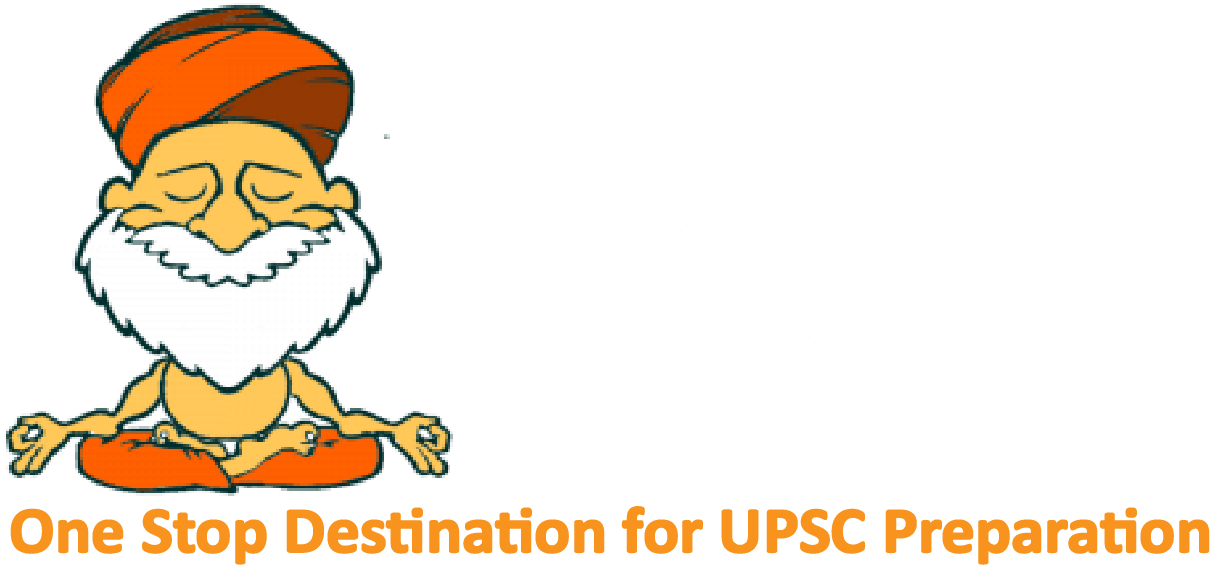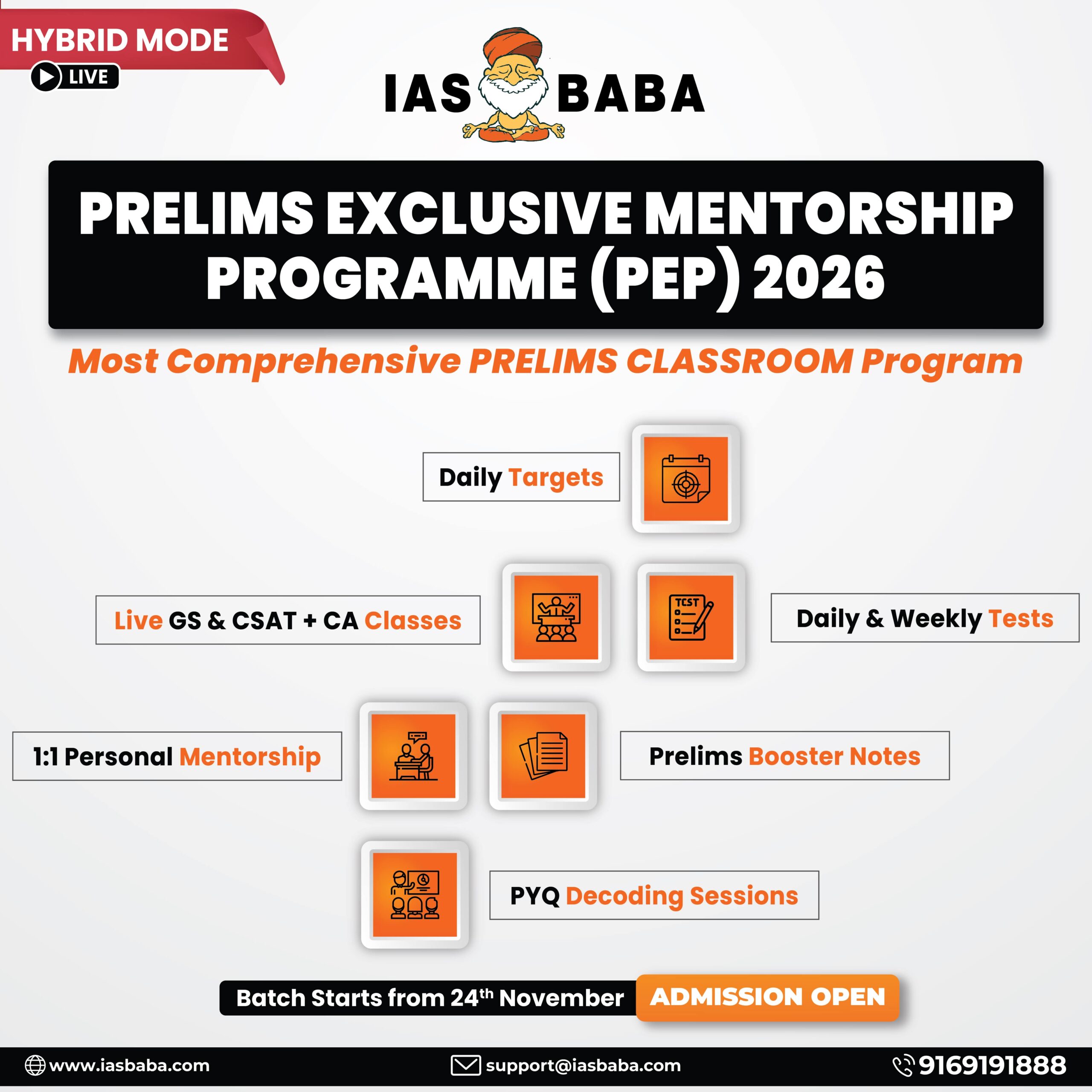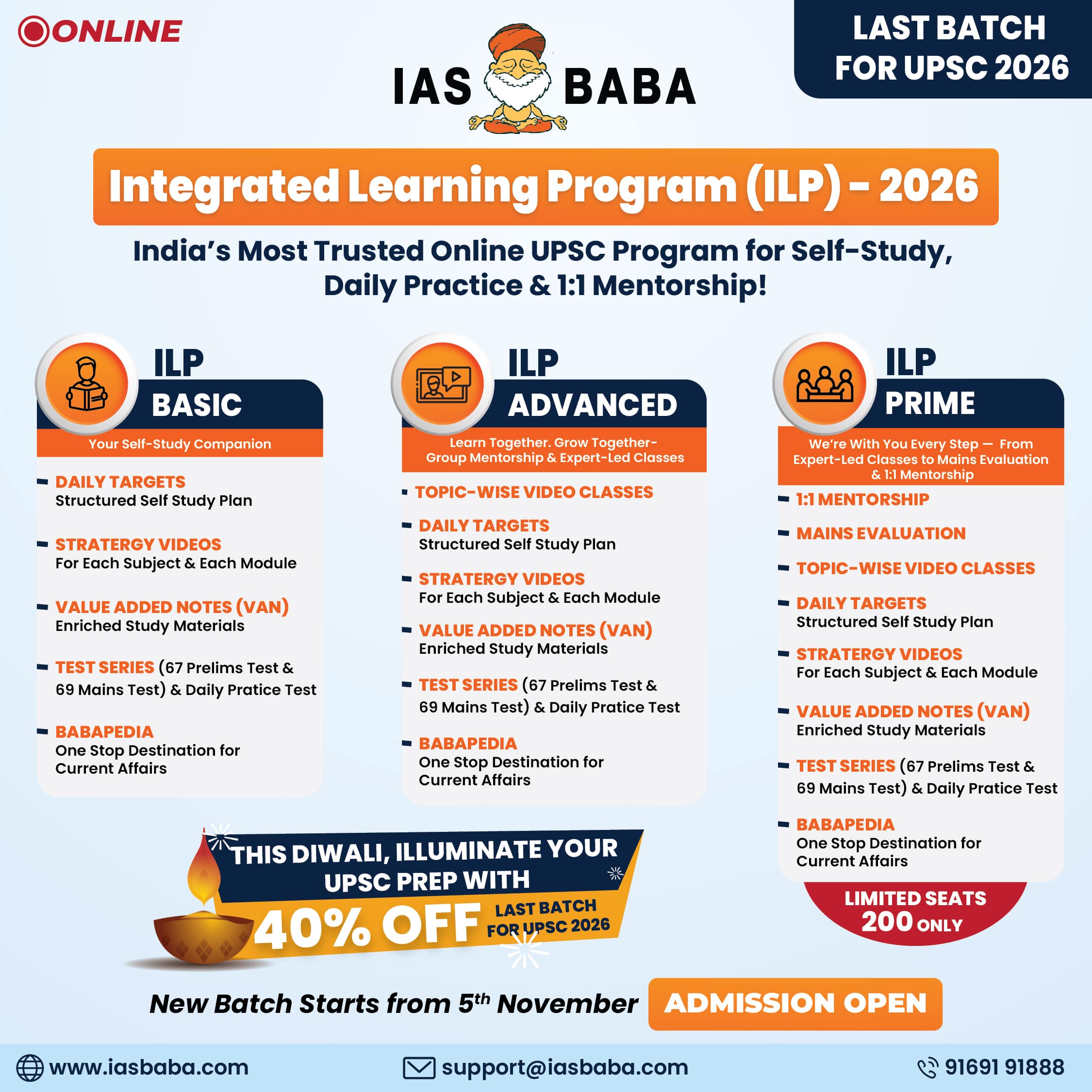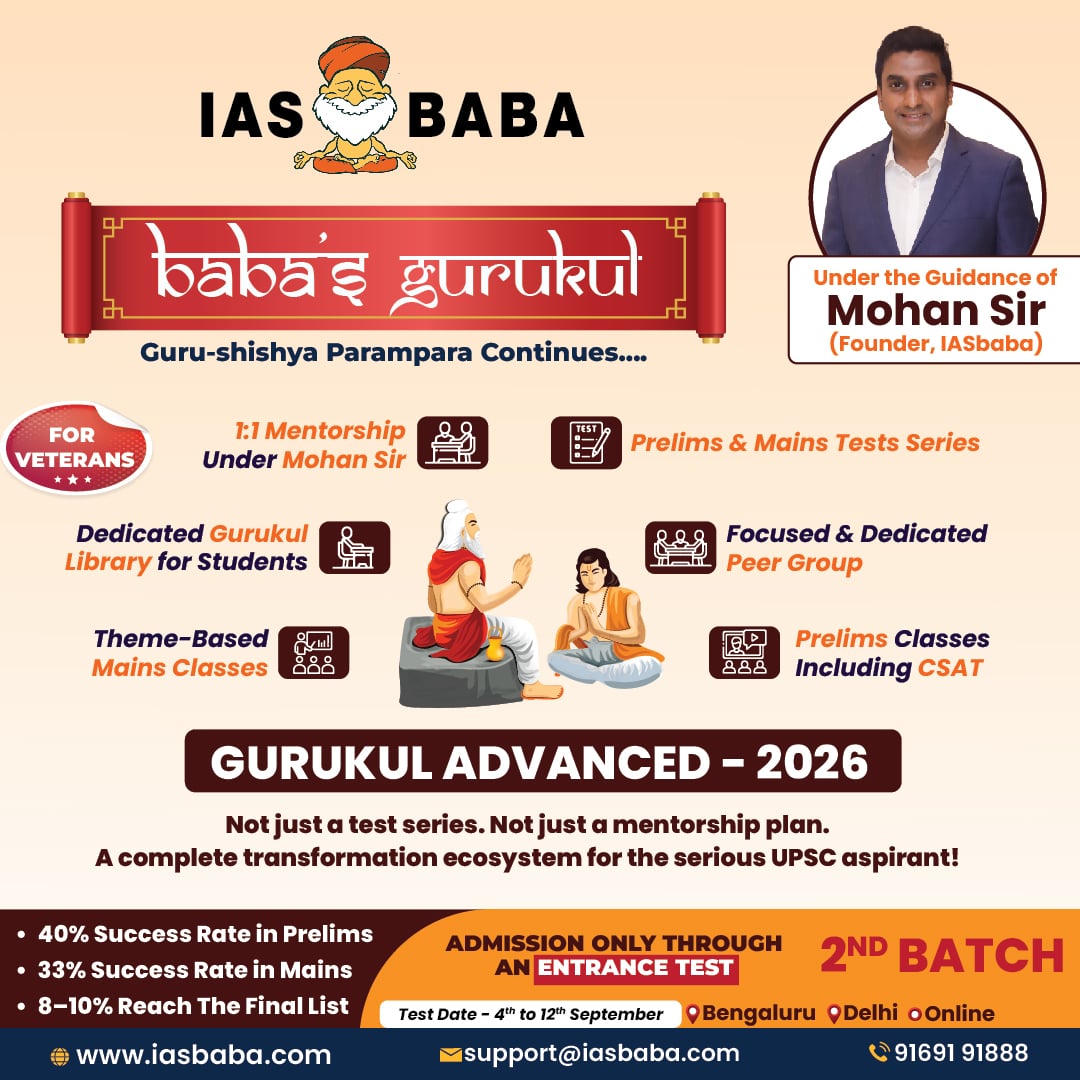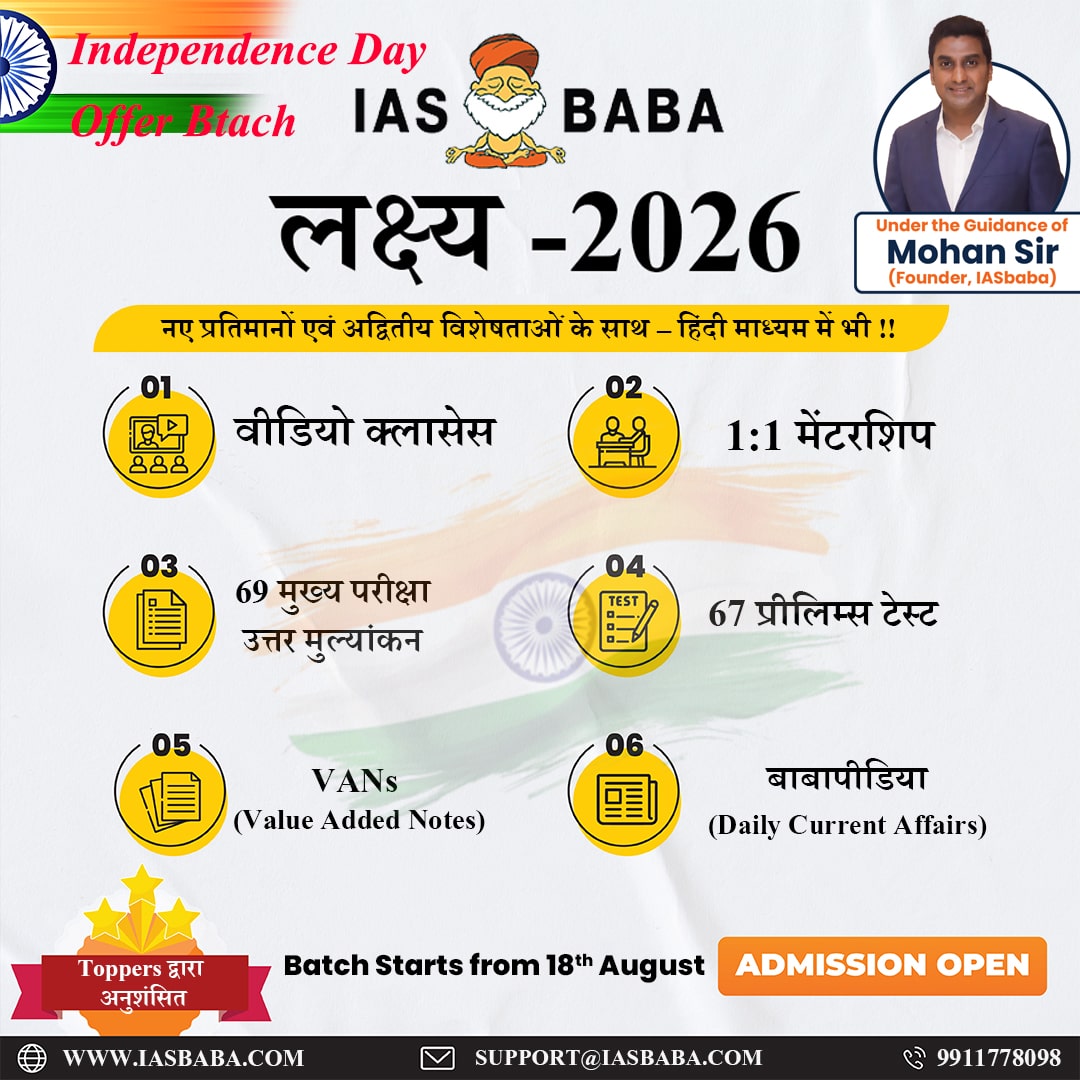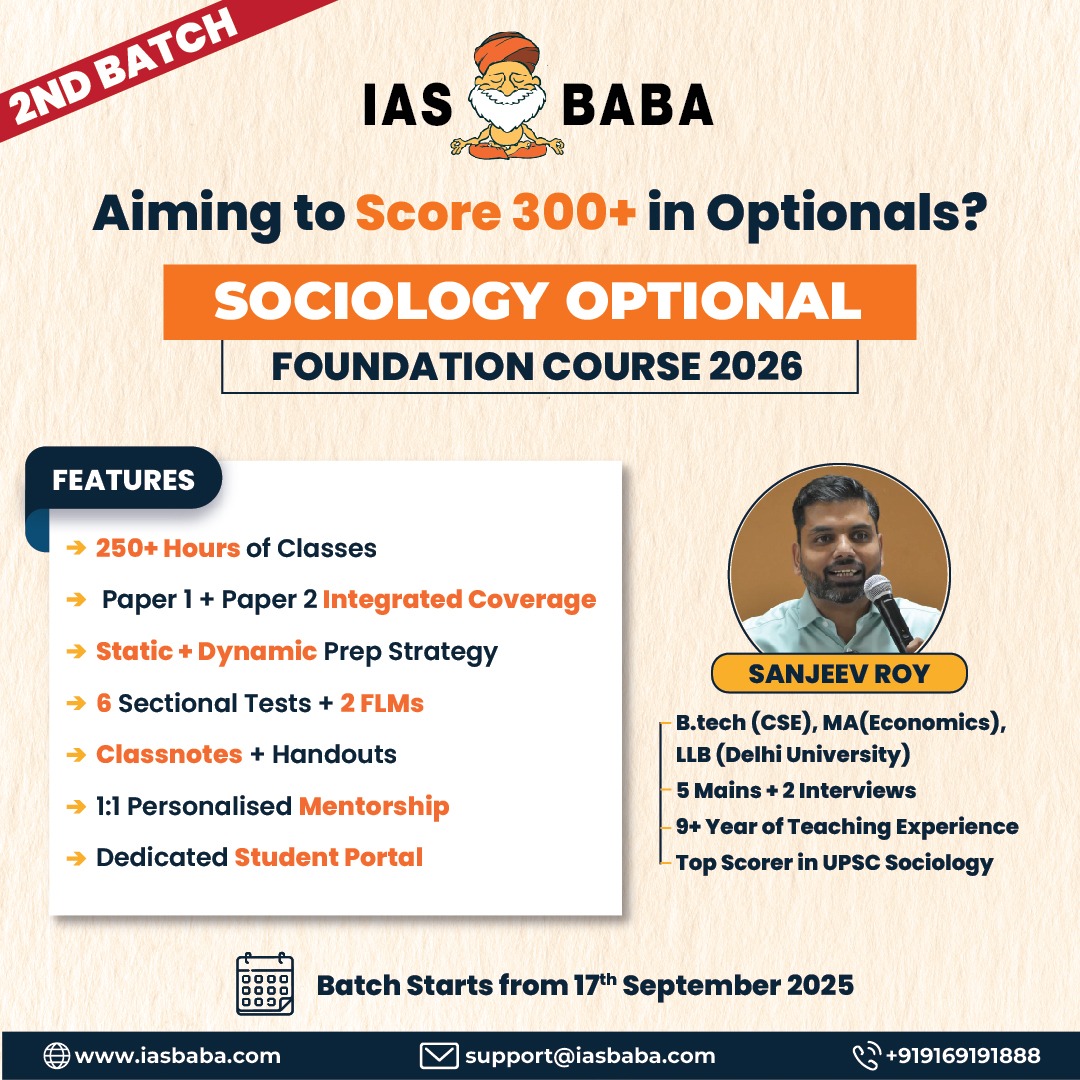IASbaba's Daily Current Affairs Analysis
Archives
(PRELIMS & MAINS Focus)
Category: HISTORY
Context: Historian M.G.S. Narayanan who played a pivotal role in shaping the Muziris Heritage Project, passed away recently.
Decoding the context: A towering figure in Indian academic history, MGS Narayanan undertook a historical enquiry into Kerala’s historical past and debunked several historical myths. He was the former chairperson of the Indian Council of Historical Research (ICHR).
Learning Corner:
- Muziris Port is an ancient port on Kerala’s Malabar Coast (near Kodungallur, Thrissur), active from 3rd century BCE to 4th century CE, known as a hub of the historic spice route.
- Location: North Paravur-Kodungallur-Mathilakam area (Ernakulam-Thrissur border).
- Trade: Exported spices (black pepper, cinnamon), pearls, ivory, semi-precious stones; imported gold, wine, olive oil from Romans, Greeks, Persians, and Arabs.
- Cultural Significance: A cosmopolitan center hosting Christianity (St. Thomas, 52 CE), Judaism, Islam (Cheraman Juma Masjid, 629 CE), and Jainism (Tamil-Brahmi script evidence).
- Decline: Muziris likely declined due to a massive flood in 1341 CE, which altered the course of the Periyar River, leading to the silting up of the port and the rise of Cochin (Kochi) as a new harbor.
Muziris Heritage Project (MHP):
- Launched in 2009 by Kerala Tourism to conserve 3,000-year-old heritage across 150 sq km.
- Includes 25+ museums, restored monuments (Paliam Palace, Paravur Synagogue, Cheraman Juma Masjid), and Pattanam excavations.
Important Contemporary Ports in India (3rd Century BCE–4th Century CE)
- Tamralipti (Tamluk, West Bengal):
- Major eastern port under Mauryas, Guptas; linked to Southeast Asia, China.
- Traded rice, textiles, spices; mentioned in Buddhist texts (Jatakas).
- Connected to Ganga River trade routes.
- Bharukaccha (Bharuch, Gujarat):
- Western port under Satavahanas, Western Kshatrapas; traded with Rome, Persia.
- Exported cotton, agate, beads; imported wine, metals.
- Arikamedu (Puducherry):
- Southern port near Chola capital; active 2nd century BCE–2nd century CE.
- Traded beads, pottery, textiles with Romans (evidenced by Roman ceramics).
- Archaeological finds confirm Mediterranean trade links.
- Poompuhar (Kaveripattinam, Tamil Nadu):
- Chola dynasty’s primary port; mentioned in Sangam literature (Silappathikaram).
- Traded pearls, spices, silk with Southeast Asia, Rome.
Source : The Hindu
Category: SCIENCE & TECHNOLOGY
Context: The number of rabies deaths has been increasing in Kerala reportedly at an alarming rate over the past four-five years.
Decoding the context: According to the Health department, in 2021, the number of deaths was 11. There were 15 deaths in 2022, 17 in 2023, and 22 in 2024. This year, there has been 12 deaths so far.
Learning Corner:
- Rabies is a viral zoonotic disease caused by the rabies virus (genus Lyssavirus), affecting the central nervous system.
- Transmitted primarily through bites or scratches from infected animals (e.g., dogs, bats, cats).
- Fatal once clinical symptoms appear; 100% preventable with timely vaccination.
Causes and Transmission
- Primary Source: Dog bites (99% of cases globally); other sources include bats, wild cats, mongooses.
- Mechanism: Rabies spreads to people and animals via saliva, usually through bites, scratches, or direct contact with mucosa (e.g. eyes, mouth, or open wounds). Once clinical symptoms appear, rabies is virtually 100% fatal.
- Incubation Period: 2 weeks to 6 years (average 1-3 months), depending on bite location and severity.
Symptoms
- Early: Fever, headache, itching at bite site.
- Advanced: Hydrophobia, agitation, paralysis, coma; death within days due to respiratory failure.
Prevention and Control
- Rabies is almost entirely preventable with timely post-exposure prophylaxis (PEP), which involves washing wounds with soap and water, administering anti-rabies vaccine (ARV), and in high-risk exposures, using rabies immunoglobulin (RIG).
- Animal Control: Animal Birth Control (ABC) program, vaccination of stray dogs, public awareness.
- Challenges: Vaccine shortages, delayed treatment, inadequate wound care, rising stray dog population.
Source : The Hindu
Category: ENVIRONMENT
Context: With the US pushing India to reduce import duty on alfalfa (lucerne) fodder seed, the government is preparing the ground for restricting the genetically modified (GM) version of the crop from entering the country.
Decoding the context: The Americans grow both GM and non-GM varieties of alfalfa, which derives its name from the Arabic world al-fasfasa that means the best forage.
Learning Corner:
- Alfalfa, also known as Lucerne, is a perennial flowering legume.
- Native to South-Central Asia, now cultivated globally.
- Known for its high nutritional value and soil-enriching properties.
Agricultural Importance:
- Used primarily as fodder crop for livestock (rich in protein, vitamins, and minerals).
- Can be harvested multiple times a year due to rapid regrowth.
- Cultivated in temperate and subtropical regions, including parts of Punjab, Haryana, and Maharashtra in India.
Environmental & Ecological Role:
- Nitrogen-fixing plant (symbiotic relationship with Rhizobium bacteria).
- Improves soil fertility and reduces dependence on synthetic fertilizers.
- Helps in crop rotation and sustainable agriculture.
- Deep roots reduce soil erosion and improve water infiltration.
Climate & Soil:
- Prefers well-drained loamy soils, neutral to slightly alkaline pH.
- Requires cool temperatures for germination and warm conditions for growth.
- Needs moderate irrigation – drought-tolerant once established.
Fodder Use:
- High crude protein (15–20%) and digestibility.
- Used in dairy and meat industries for feeding cattle, sheep, goats, and horses.
Nutritional/Health Use (Human Consumption – Limited):
- Young alfalfa sprouts are consumed in salads.
- Known for antioxidant, cholesterol-lowering, and anti-inflammatory properties.
- Used in Ayurveda and herbal medicine.
Source : Hindu Businessline
Category: SCIENCE & TECHNOLOGY
Context: India is grappling with a critical shortage of agentic AI professionals as demand surges.
Decoding the context: The current talent pool of under 100,000 is struggling to meet the projected need of 200,000 by 2026, leading to soaring salaries and intense competition among GCCs, IT firms and startups.
Learning Corner:
- Agentic AI refers to artificial intelligence systems that can autonomously plan, make decisions, and take actions to achieve goals without step-by-step human instructions.
- These systems act as “agents” – they exhibit initiative, autonomy, and goal-directed behavior.
Key Features:
- Autonomy: Can operate independently of direct human control.
- Proactivity: Not just reactive; initiates actions to meet objectives.
- Planning & Reasoning: Can break down complex tasks, plan steps, and revise plans dynamically.
- Memory and Learning: Retains past experience to improve future decisions.
- Interaction: May collaborate with humans or other AI agents (multi-agent systems).
Examples:
- AI Personal Assistants that manage schedules, book tickets, and handle emails autonomously.
- Robotic agents performing tasks in disaster zones, space missions, or factories.
- Autonomous vehicles with goal-oriented navigation.
Source : Economic Times
Category: INTERNATIONAL
Context: UNESCO has added 16 additional sites from 11 nations to its Global Geoparks Network, which celebrates its tenth anniversary this year.
Decoding the context: The new geoparks are in China, North Korea, Ecuador, Indonesia, Italy, Norway, South Korea, Saudi Arabia, Spain, the United Kingdom, and Vietnam.
Learning Corner:
- UNESCO Global Geoparks are single, unified geographical areas with internationally significant geological heritage, managed with a holistic concept of protection, education, and sustainable development.
- They showcase geological diversity along with ecological, archaeological, historical, and cultural richness.
- At present, there are 229 UNESCO Global Geoparks in 50 countries.
- North Korea recorded its historic first with the inclusion of its site Mt. Paektu in the UNESCO Global Geoparks Network, while Saudi Arabia has made its debut on the list with two newly designated geoparks.
- As of April 30, 2025, India does not have any UNESCO Global Geoparks.
Criteria to be a UNESCO Global Geopark
- The criteria for an area to become a UNESCO Global Geopark are set out in the Operational Guidelines for UNESCO Global Geoparks. There are four fundamental features to a UNESCO Global Geopark.
- Geological heritage of international value: The area must have geological heritage of international value.
- Effective management structure: UNESCO Global Geoparks are managed by a body having legal existence recognized under national legislation.
- Visibility: UNESCO Global Geoparks promote sustainable local economic development mainly through geotourism. To stimulate the geotourism in the area, it is crucial that a UNESCO Global Geopark has visibility.
- Networking: Membership of the Global Geoparks Network (GGN) is obligatory for UNESCO Global Geoparks.
- Notably, sites are given the designation of UNESCO Global Geoparks for a period of four years after which the functioning and quality of each UNESCO Global Geopark is thoroughly re-examined during a revalidation process. According to UNESCO’s official site-
- If, on the basis of the field evaluation report, the UNESCO Global Geopark continues to fulfill the criteria, the area will continue as a UNESCO Global Geopark for a further four-year period (so-called “green card”).
- If the area no longer fulfills the criteria, the management body will be informed to take appropriate steps within a two-year period (so-called “yellow card”).
- Should the UNESCO Global Geopark not fulfill the criteria within two years after receiving a “yellow card”, the area will lose its status as a UNESCO Global Geopark (so-called “red card”).
Source : Indian Express
Practice MCQs
Q1. With reference to UNESCO Global Geoparks, consider the following statements:
- They are designated solely based on archaeological and cultural heritage.
- India currently has no site recognized as a UNESCO Global Geopark.
- Geoparks aim to promote education, conservation, and sustainable development.
Which of the statements given above is/are correct?
- 1 and 2 only
B. 2 and 3 only
C. 1 and 3 only
D. 1, 2 and 3
Q2. With reference to Agentic Artificial Intelligence (Agentic AI), consider the following statements:
- It refers to AI systems that act with a degree of autonomy to pursue goals.
- Agentic AI systems always require detailed, step-by-step human input to perform tasks.
- Such systems are capable of learning from experience and adapting behavior over time.
Which of the statements given above is/are correct?
- 1 and 2 only
B. 2 and 3 only
C. 1 and 3 only
D. 1, 2 and 3
Q3. With reference to Alfalfa (Lucerne), consider the following statements:
- It is a leguminous fodder crop with nitrogen-fixing properties.
- It is commonly used as a staple grain crop in human diets across tropical countries.
- Its cultivation can improve soil fertility and help prevent erosion.
Which of the statements given above is/are correct?
- 1 and 2 only
B. 2 and 3 only
C. 1 and 3 only
D. 1, 2 and 3
Comment the answers to the above questions in the comment section below!!
ANSWERS FOR ’ Today’s – Daily Practice MCQs’ will be updated along with tomorrow’s Daily Current Affairs
ANSWERS FOR 23rd April – Daily Practice MCQs
Q.1) – b
Q.2) – b
Q.3) – c

